Lessons From The Gunsmiths
How Do I Learn To Work On Guns?
June 1, 2018
This is a question that seems to come up on a frequent basis, often after the individual has just put away his or her wallet or check book. It is a good question for any person who owns firearms, particularly if they have some mechanical ability, and an interest in properly maintaining their personal firearms. This does not mean that everyone should start "working" on their guns. It does, however, open up an opportunity to learn and progress.
Before We Start
Remember the basic safety rules. All guns are always loaded. This is the rule even after you have checked them several times. Remove all live ammunition from the room or area where you will be working.
Begin By Reading
What do you know about your firearms? Current manufacturers go to great lengths to educate their customers about the gun that they have purchased. Every modern firearm purchased new comes with an owner's manual. Some manufacturers even engrave on the gun, offers of free owner's manuals to anyone who subsequently buys their gun as a used purchase.
The owner's manual presents an interesting problem that is almost universal. It does not get read. This occurs most often with the male of the species, who feel it is a part of our genetic makeup to "know how to...". Case in point, look in the glove compartment of your car, and find the unread owner's manual. You may have looked up one or two things, but look in the mirror and try to tell that guy you read the whole thing.
My Fire Service Background
I came from a different culture. The Fire Service has to maintain unbelievable training records, with standards for everything imaginable. When we would get something as simple as a new hand drill, every member would read and sign off on reading the owner's manual. Discussion would then follow.
It is important to remember that this is a C.D.O. culture (for those not familiar with the term, it is O.C.D. in alphabetized form). My point is that the owner's manual for your gun contains information on safety, cleaning and basic disassembly. Most also print the basics of firearms safety. It will also include information on lubrication types and places.
Information Can Have Great Value
Firearms manufacturers spend fortunes and their engineers countless hours compiling this information. It can be of value to you.
While this is a wonderful thing, what do you do with the pistol that great uncle Joe brought back from World War II?
Continue Reading
What markings are on that pistol? Most firearms manufacturers want you to be able to identify who made their product.
Exceptions Such Pre-WWII Weapons
There are exceptions to this. Pre-World War II German weapons were often made in violation of the treaty of Versailles, which ended the First World War. Efforts were made to conceal not only their manufacture, but also the location of manufacture. Codes were used to designate factories that made the gun, and these were changed during the time the war continued. Examples are BYF for Mauser and AC for Walther production.
Made By One, Sold By Another
Sometimes guns were made by a company to be sold by another company. There are many guns marked "J.C. Higgins" that were sold by Sears stores. J.C. Higgins was a Sears employee who never designed or worked in the manufacture of a single gun. His name sounded good.
Sears did not manufacture any of the guns that they sold. Instead, they had manufacturers bid on classes of guns. Your Sears-marketed .30-30 may have been made by Winchester one year and the same "model" by Marlin the next. While the guns are completely different, they both were .30-30 rifles sold by sears. Parts interchangeability may be limited to a couple of butt stock screws and the rear sight elevator.
So, How Do You Know?
So how do you know? Often there are parts codes, or model numbers that are not the same as the manufacturer's. Numrich Arms Company has an extensive parts catalog that has a very informative list of who made what. You may even find out who made your Western Field .22 rifle, and what parts are available. They also have parts lists, schematics and very helpful employees. Don't forget to check the internet (also listed as The Gun Part Company).
No, You Are Not Done Reading Yet!
There are books on firearms disassembly which are well worth their cost - not only for the firearms they describe, but also for the disassembly methods used by the designers. These seem to be repeated, at least in part, for many different guns.
Time To Consider Safety And Tools
About now, if not before, it will be time for you to pick up some tools and get ready to clean your gun. Before you do so, two more subjects must be covered. These topics are safety and tools.
Screwdrivers
First we will cover tools. Do not touch a gun with a carpentry type of screwdriver. If you look at most screwdrivers the blade tapers to a point. If you look at gunsmithing screwdrivers, the blade has parallel flats, with a flat edge that matches the slot in the screw. The fit of the blade into the slot is critical to keep from damaging the screw, and worse, the finish of the gun in the area around the screw.
Punches And Hammers
The other most common fastener that holds gun parts together is a pin. These can be solid, or hollow (called roll pins because of the way they are formed). Solid pins may also have a slight taper to fit tightly in their holes. Roll pins compress slightly when inserted in their holes. These two types of pins require two different types of punches to remove them, and are sold in sets of appropriate sizes.
You will also need a small hammer to drift out the pins. These are usually made of brass, and often have a plastic striking face on one side. Tools for basic gunsmithing are often sold in basic sets, and are well worth the investment, as they will help to prevent damage to the gun you are working on.
Many companies sell this equipment, such as Brownells, Natchez Shooter Supplies, Midway, E-Bay and many others found on the internet.
Gun Cleaning
Next, some brief instructions on gun cleaning - first the cleaning of the barrel. Huge amounts of damage can be done when a firearm is improperly cleaned. One of the most common types of damage we see (after damaged screws) is damage to the muzzle of the gun.
Important To Accuracy
While cleaning firearms is important to accuracy, and to prevent rust, you are very likely to damage your firearm by improper cleaning. The first consideration is, when are you next shooting that weapon? If it is in the near future, total cleaning is definitely not necessary.
For a precision rifle, the first shot from a clean bore (often referred to as a cold barrel shot) will have a slightly different point of impact. This is a result of residual cleaning fluids in the bore, which, along with jacket fouling, can change the coefficient of friction between the bullet and the rifle bore.
For Periods Of Storage
Firearms that are going to be stored for long(er) periods of time benefit from a more thorough cleaning to ensure you remove all particles of unburned powder, burned powder residue, bullet jacket materials, shot shell plastic residue and any dirt and moisture deposited by use. A heavier application of oil will help prevent rust formation.
Cleaning The Barrel
The first thing to determine is whether or not you can clean the barrel from the breach (back) end. For bolt action rifles, break open rifles and shotguns, and some lever action rifles, this involves removing the bolt. Owner's manuals and/or research will help with this question.
If you cannot clean from the breach end with a traditional type of cleaning rod, give serious consideration to using one of the woven-rope type bore-cleaning tools.
Many Types Of Rods: Steel, Brass, Aluminum
Cleaning rods come in many types and materials. In the old days, one piece steel or brass rods were common. Steel and newer stainless-steel rods have very hard surfaces. This prevents imbedding of metal from the shop floor or dings in the rod. Imbedded metal, or dings will cause scrapes and scratches in the bore.
These rods, if not properly centered in the bore, using a bore guide, can damage the lands and groves of the rifling in the bore, muzzle and chamber throat. If used from the muzzle end (as was often done), this can wear away metal, resulting in an oval shape muzzle that significantly degrades accuracy.
The brass rods would easily allow metal to be imbedded, causing scratches, but were soft enough to not directly damage the bore. All damage would be from the imbedded metal.
Jointed (sectioned) steel rods that were in early cleaning kits and military rifle field cleaning kits have the additional problem of metal fragments lodging in the joints, and were not usually issued with any type of bore guide. Newer cleaning kits often contain aluminum jointed rods. These have many of the problems described above.
Most Often Used Now
One piece carbon fiber, and coated stainless steel rods are now most often used. The coatings on these rods need to be very tough, to prevent debris embedding, and soft enough to not damage the rifling in the bore. Most have handles that are comfortable to hold, and have a swivel located in the front part of the handle to allow the bore brush or patch to freely rotate as it follows the twist of the rifling during the cleaning process.
Be sure to purchase any necessary adapters if they do not have a standard type threading, such as the excellent Dewey Brand, which uses special proprietary tips and brushes, but works just as well when used with the supplied rod adapter.
Correct Size
Cleaning rods come in sizes for different calibers. It is important to obtain and use the correct size rod for your rifle's bore. A rod that has to large a diameter has the potential to damage the rifling, and one that is too small will flex, and ride on the side of the bore.
Rods range from the .17 calibers to the big bore, and special shotgun sizes, but do not take up a huge amount of room. They are also found in lengths from short pistol rods to appropriate ones for long target barrels. They are a worthwhile investment. As with any tool, rods should be maintained by wiping down with a soft cloth and inspecting the rod's surface.
Bore Guides
Bore guides are tubular devices that fit inside the receiver and perform two primary functions. First, they serve to align the brush and rod with the bore. This centering of the rod minimizes chances for any damage to the rifle bore. The second function is to keep bore-cleaning solvents out of the action and magazine area of the rifle. These solvents can flush away lubricants needed for the rifle to operate properly. These lubricants can then get gummy and attract a buildup of dirt.
Again, there are many types and sizes, for different bore sizes and different action lengths. Most of the manufacturers of cleaning equipment have a variety of bore guides for your price range and needs. Some of the available bore guides are caliber and action-length specific while others are multi caliber and adjustable.
Bore Brushes
Bore brushes are often purchased by price, with no attention as to type or purpose. The most common type is the Phosphor bronze brushes that are bristles on a twisted wire. Wires can be made of various materials, and can affect brush performance, such as steel wires making the brush stiffer.
Rifles with custom barrels, or highly accurate factory barrels should use brushes with softer wires, to further reduce any chance of damage to the bore. The material in these brushes is very compatible with standard bore solvents that do not contain copper solvents, as these solvents are powerful enough to work on the brush.
Brushes with stainless-steel bristles are best reserved for revolver cylinder chambers. Brushes with nylon bristles are best for copper solvent bore cleaners. In every case, the brush should be properly sized for its intended use.
Do not fall into the trap of buying an oversized brush with the belief that it is harder to push through the bore, so it will clean better/faster. This assumption is not only false, but can cause damage.
A Pause And Reminder
This is a good spot to pause, so until next time, good luck and safe shooting!


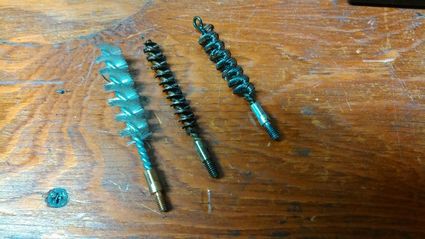
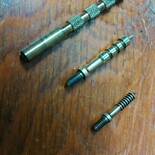
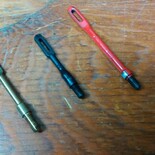
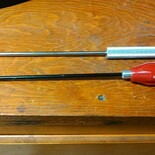
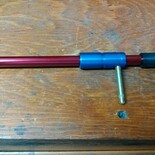
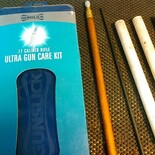
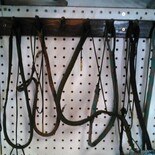
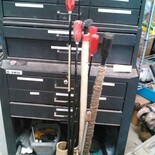
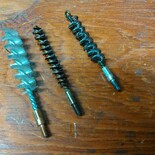












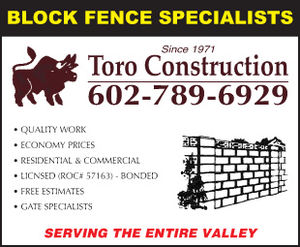


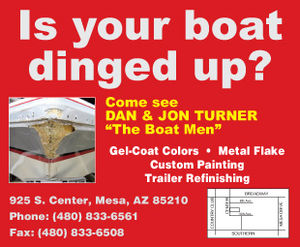



Reader Comments(0)